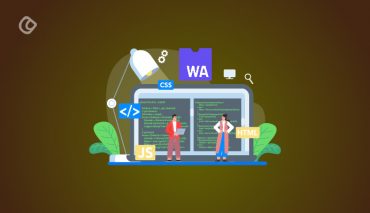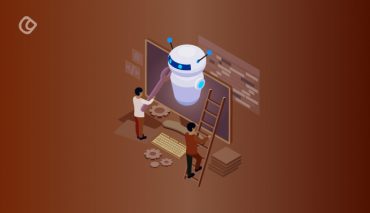Virtual teaching has increased in popularity due to the expansion of internet outreach and its accessibility across the globe. Although virtual teaching isn’t new; it has garnered attention lately.
As the phenomenon of virtual teaching is gaining momentum, educators and students are equipping themselves with devices such as desktops, laptops, and smartphones to streamline the virtual teaching environment.
Several online tools such as Zoom, Microsoft Teams, Google Hangouts, etc., are being used by the teachers and students alike for virtual communication and collaboration.
Other tools such as Skype, Spiral, Project Pals, etc., are also being adopted for activities including conducting lectures, sharing and receiving reference materials, creating animated instructional videos, and assessing the assigned homework of students as well.
However, while it might not be fair to claim that virtual teaching is riddled with complexities, they aren’t free of pitfalls either.
In the Bring your own devices (BYOD) scenario, challenges such as engaging students, feedback sharing, assessing homework, etc., all through several tools are becoming a hurdle since not all students might have access to it.
Moreover, since the adoption of technological drivers such as desktops, laptops, Internet, etc., encompasses virtual teaching parameters; high cost for acquiring the assets, lack of knowledge of using these devices, and the fear of device’s data leakage are making the virtual teaching experience inadequate as compared to the traditional classroom teaching.
In this article, we will deep dive into five pressing challenges that the educators and education centers are facing when it comes to virtual teaching and what measures can they take to overcome those hurdles.
Collaboration for educational materials
Educational institutions or teachers need to ensure that all the relevant study materials needed to conduct the virtual classes or help students to prepare their assignments such as presentations, PDFs, reference notes, etc., are shared as per their grades individually.
Using e-mail to share the dedicated resources can be an apt idea. However, owing to the restrictions on the attachment sizes; recorded lecture videos, infographics, and PDF files with large attachment capacity can be a hurdle.
Moreover, there are also chances of uncertainty if the students have relevant applications installed on their devices that support the extension of documents/files shared by the teachers.
Also, attachments in the e-mails can be a bit cumbersome to locate for a specific course or on the pile of study material files sent by the teachers for most of the students.
To overcome this challenge, educational institutions can leverage Mobile Device Management solutions. They can enroll the deployed devices or even student-owned devices and manage them through a single console.
With features such as content management and application management, teachers can push course-relevant materials and in-house/mission-specific applications on all the managed devices within a few clicks without difficulty.
It is also possible to periodically update and delete these documents, and students can always have the latest version of the course materials available on their devices.
Furthermore, teachers can remotely access files on student devices for evaluation using Remote File Sync supported by several MDM solutions and this can help to overcome collaboration lapses in remote learning.
Loophole of distraction
The educational institutions must ensure that students using the devices during the virtual classroom environment are equipped only with relevant applications and content with restrictions in order to not get distracted elsewhere.
It is easy for the students to migrate to lucrative applications such as games, entertainment zones, social media channels, or any other websites that may not be appropriate for visiting or are profane in nature.
Students unintentionally downloading and installing malicious applications can also not be undermined. Moreover, young students sometimes lack the maturity to understand the extent of damage these unintentional activities can bring to their devices.
To overcome this challenge, educational institutions can lock down the student’s devices into a single-app mode through an MDM solution.
Moreover, educators can also enforce certain predetermined frameworks such as whitelisting relevant weblinks or blacklisting the keyword-based searching with an active advanced profanity filter on the browser and push those policies in the student’s devices over the air.
This will reinstall the directional focus in students and they won’t get an opportunity to get distracted.
Virtual maintenance of remote devices
When the devices used by the student’s malfunction, virtual teaching encounters another hurdle. To ensure that students do not miss any learning opportunities, it is imperative to provide remote assistance to them by resolving the device issues.
Parents and children are unlikely to be able to comprehend and explain the error and its cause to the educational institutions to find a remedy.
There can also be complications that the teachers or the students may face during the virtual classroom environment such as inaccessibility to view or download the study materials, inability to attach a specific extension of files/study materials, technical difficulties in the devices, or any such malfunctions.
The inability to cater to device issues and offer instant troubleshooting can pose a grave concern.
An MDM solution has the advantage of allowing IT administrators to virtually troubleshoot all devices within one holistic dashboard.
With an MDM solution, IT admins of the educational institutions can attend to the device’s malfunctions virtually so that the educational opportunities are not halted.
The majority of MDM solutions support the remote cast of iOS, Android, and Mac devices used in education so that the screens of these devices can be mirrored remotely on desktops and computers at the IT desk. These benefits can help IT to detect issues before they become catastrophic.
Enable device sharing
In most instances of virtual teaching, there aren’t enough mobile devices available in all the schools and with parents to provide all students/children with one to use alone.
For educational institutions, it becomes imperative to implement a system that allows more than one student to share a single device safely.
Several MDM providers include profile switch functionality as a standard feature. Educational institutions can leverage this feature and provide a way for each student to use unique log-in details to access apps, learning materials, community forums, and assignments.
Mobile device management provides device data security for all the personal data of multiple students, regardless of how many distinct profiles are logged onto the same device.
Minimize the number of potential network vulnerabilities
It is difficult for schools to protect their networks adequately. Why? The foremost factor is the sheer number of students and their devices connected to the network.
The second reason is that the users (students) lack the knowledge on how to behave on the Internet. Their knowledge of cybersecurity is either scant or nonexistent, and they have very limited knowledge of what malware or phishing emails are.
The need for cybersecurity contributes to the driving factor for MDM in virtual teaching. MDM solutions enable students and teachers to use their personal devices without endangering their schools’ networks.
Through the implementation of mobile device management, schools can protect the fleet of devices being used in virtual teaching environments against malicious software, phishing attacks, and intellectual property theft (including compromising or leaking research papers, essays, lessons, or other intellectual property).
From an IT perspective, MDM simplifies the implementation of security measures such as encryption, app updates, and data backup. Additionally, remote wiping ensures that private and proprietary data is removed safely in the event that devices are lost, stolen, or hacked.
This combination of features diminishes the possibility of data theft and ensures that critical data is fast restored in the event of a loss or compromise.
Closing lines
Schools can’t overemphasize the importance of MDM in today’s digital world. The utilization of classroom device management makes it easier for teachers to manage students and classes, especially in times of virtual teaching.
An MDM solution can be an apt platform that can leave a positive impact in the manner of how virtual teaching is being conducted.
The schools and educational institutions can provision Android tablets, iPad, Windows 10, and macOS computers and laptops for the student to learn in a distant environment.
It can empower the educators as well as the students to mitigate the challenges acting as a boulder in the virtual classroom including – device management, data protection, application and content management, remote troubleshooting, etc.
Author Bio
Ayush Maskara is a Content Writer at Scalefusion Windows MDM Solution. A media science graduate, a photographer, a fiction author, a storyteller, a fiction manuscript editor, and an avid self-help reader, Ayush has been penning the creative wisdom for six years and has stepped into the IT domain for further exploration and staying awake with technological trends across the globe.
Acodez is a renowned web development company and web application development company in India. We offer all kinds of web design and Mobile app development services to our clients using the latest technologies. We are also a leading digital marketing company providing SEO, SMM, SEM, Inbound marketing services, etc at affordable prices. For further information, please contact us.
Looking for a good team
for your next project?
Contact us and we'll give you a preliminary free consultation
on the web & mobile strategy that'd suit your needs best.





